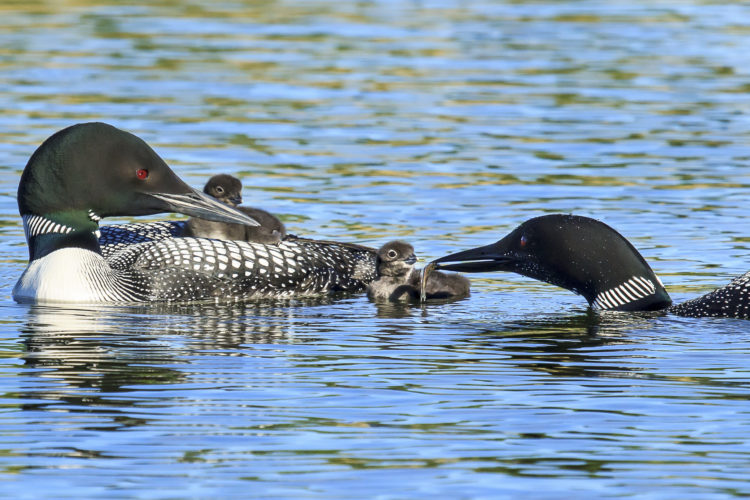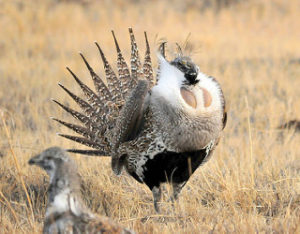We have much more to do and your continued support is needed now more than ever.
Stop These Harmful Environmental Provisions
What does the House of Representatives currently have caught in the crosshairs? For starters, the largest wildlife refuge in the mainland United States! There are several detrimental environmental provisions in the House’s version of the NDAA. Described below are just some of the most blatant attacks on America’s wildlife.

- Block Clean Water Act Implementation: Invasive non-native aquatic species cost this country billions of dollars annually and can cause irreversible harm to important waters like the Great Lakes and Chesapeake Bay. Yet, this provision exempts ballast water discharges from regulation to prevent the spread of such invasive species.
-

Bighorn sheep. Photo by Steve Woodruff Transfer of the Desert National Wildlife Refuge: Over half (800,000-plus acres) of the Desert National Wildlife Refuge in Nevada would be transferred to the Air Force, which hasn’t even requested the transfer. The Desert National Wildlife Refuge is the largest refuge in the contiguous United States, and provides key habitat for bighorn sheep, mule deer, and mountain lions. This transfer would waive National Environmental Policy Act (NEPA) safeguards and strip the U.S. Fish and Wildlife Service (USFWS) of its authority to conserve species and their habitats on lands that had been set aside as a refuge.
- Endangered Species Act De-listings: One provision would block the Endangered Species Act (ESA) protections for the lesser prairie-chicken for at least six years, and then impose arbitrary restrictions on whether USFWS can relist the bird regardless of its biological status. The lesser prairie-chicken currently occupies less than 15 percent of its former range, and its population dropped by half between 2012 and 2013. Another provision would immediately and permanently remove the American burying beetle from protection under the ESA and prevent it from receiving any protections in the future. This would be the first time Congress has delisted an endangered or threatened species without the support of the U.S. Fish and Wildlife Service.
-

A male greater sage-grouse. Photo by USFWS/Mountain-Prairie Region Blocks Sage-Grouse Conservation Plans: This provision would block efforts by the U.S. Forest Service and the Bureau of Land Management to conserve greater sage-grouse habitat on the lands they manage. Years of work by these agencies, in collaboration with states and local governments as well as other stakeholders like the National Wildlife Federation, would just be set aside. Moreover, the Secretary of the Interior would be barred from taking any action under ESA to protect the bird for the next decade. The primary reason the sage-grouse was not listed this past fall was because of the federal conservation plans. Without them, the bird’s survival is not ensured. Last month, senior military officials with the Army, Navy, Air Force, and the Office of the Assistant Secretary of Defense for Readiness wrote letters to Congress confirming that conservation efforts to protect sage-grouse and its habitat on public lands will not adversely impact military readiness.
The House of Representatives will be working on the NDAA during the next couple of days. Please, contact your Representative’s office and let them know that you don’t support using the NDAA to target defenseless animals and transfer prime wildlife habitat out of the public domain.
Help NWFHelp the National Wildlife Federation continue protecting wildlife and wild places like those mentioned above





















